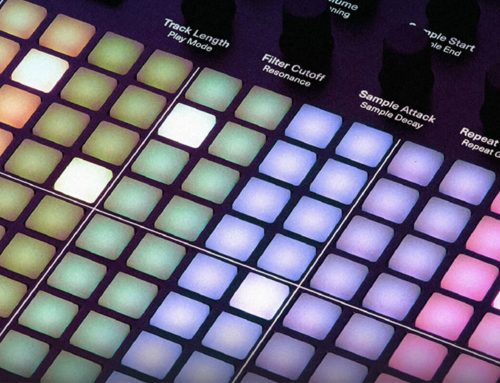The year was 2010, the last vestige of time in which, when the beat dropped in the club, there would be thousands of hands in the air simultaneously cutting through the laser lights instead of holding up little glowing bars to film it.
Swedish House Mafia, the superstar DJ trio comprising Steve Angello, Axwell and Sebastian Ingrosso, had taken over the world with their euphoric Eurodance bangers, and those who’d managed to get into their residency night at Pacha, the superclub in Ibiza’s Mediterranean Old Town, knew that they were at the centre of the island’s best party.
But they weren’t prepared for what happened next. Pacha’s twin cherry logos glowed red and, suddenly, on a platform before the crowd appeared none other than Kylie Minogue, delivering an impromptu reworking of Can’t Get You Out of My Head, the irresistible beats of which now came courtesy of Swedish House Mafia.
“It was an explosion. Nobody knew it was going to happen,” says Francisco Ferrer, a local man who started working for Pacha in 1985 selling tickets and would become its global brand ambassador. “You could feel the happiness of people around the room,” he says. “It’s a big memory.” He had devised the performance with Kylie, who enjoyed the club so much she would often go incognito with her friends to dance in the middle of the crowd.

On a night like this … Kylie Minogue performing at Pacha in 2010.
Ferrer and I are speaking inside an eerily empty Pacha while technicians tinker away in the DJ booth. In just a few hours’ time, the doors will open to thousands of clubbers for the nightclub’s opening party, heralding the unofficial start of the season. Opening party weekend here is always a big one, but as it’s Pacha’s 50th anniversary, tonight will be particularly exceptional. The anniversary marks not just five decades of the island’s oldest club, but of Ibiza partying itself.
When Ferrer was born in 1964, just a few hundred yards away from Pacha, Ibiza was a remote island unknown to many in the rest of Europe. But the seeds of its identity as a hedonistic, free and inclusive paradise had already begun to germinate. Word spread of a mythical white island with irrepressible natural beauty that had become Spain’s unofficial refuge from General Franco’s fascist government.
Ibiza soon drew the first hippies and beatniks from the US who were fleeing conscription from the Vietnam war, instead forming free-love communes and throwing raves in the rugged centre and north of the island. In Eivissa Town, across the marina from Pacha, the Calle de la Virgen street was a hallowed LGBTQ+ sanctuary.
A young entrepreneur named Ricardo Urgell, having already founded the first Pacha nightclub in Sitges, Catalonia, visited Ibiza in the early 70s and was determined to create the first official discotheque there. Ignoring financial advisers who complained that a bunch of hippies was too small a group of people to cater for, Urgell converted an old whitewashed farmhouse into a party palace and, in 1973, Pacha Ibiza was born.

Flower Power, the club’s earliest themed night, is still going to this day – playing 60s and 70s music. Resplendent with daisies and peace signs, the farmhouse once famously played Imagine while an elevated bed made its way through the crowd, upon which languished a pair of joint-smoking John Lennon and Yoko Ono impersonators.
‘I partied with an Italian princess’: the glory days of clubbing in Ibiza – in pictures
At another Flower Power night, Ferrer remembers finding Mick Jagger – the real one – in an empty room. Old Snake Hips was alone, swaying, in the centre of the dancefloor, absorbed in the music. “Do you want something to drink?” Ferrer asked him, tentatively. “No,” Jagger replied. “I’m here to listen to this music. I’m alone here; nobody can disturb me and I can dance and be myself.”
By the 1980s and 90s, Ibiza was the island of personalities, and Pacha, as the sassiest, glitziest club, was “the place to be and be seen”. Any celebrity worth their salt partied there. Grace Jones was always cutting shapes while a slew of designers – Armani, Dolce and Gabbana, Jean Paul Gaultier – and their entourages packed out the VIP booths with gold jewellery and haughty smiles.
The concept of a “superstar DJ” did not yet exist, which meant the crowd and the club itself were the spectacle. Palm trees. Chandeliers of fireworks. Confetti explosions. Smoke cannon. Strobe lights. Fire-breathers. And as well as the ravers, there were the go-go dancers: beautiful women and men complementing the aural fiesta.
Double fantasy … John Lennon and Yoko Ono impersonators at Pacha in 2009.
“It was freeness,” recalls Ferrer. “You met a lot of people because maybe you are dancing and meet people next to you, then begin to speak to them, you know? There was no telephone, there was no Instagram. It was natural. Now society is very performing.”
By the late 1980s, house music was permeating from the turntables of Frankie Knuckles and Marshall Jefferson in Chicago warehouse raves. These infectious 120bpm sounds soon landed on the shores of the White Isle, where the hedonism of Pacha, Amnesia and Ku Club (the biggest club in the world, later renamed Privilege) had reached its zenith – enough to influence four British blokes to import elements of the scene to the UK.
Paul Oakenfold, Johnny Walker, Nicky Holloway and Danny Rampling were blown away in 1987 by the Balearic beats, raves that lasted for days, and their first ecstasy experiences. As soon as they landed back in London they launched their own club nights, Spectrum, Shoom and The Trip, and what happened next is well-worn UK house history: illegal raves, ecstasy, the Smiley face, tabloid hysteria and the 1988 “second summer of love”.
The next chapter is considered by many Britons (but perhaps by fewer Spaniards) as the “golden era” of Ibiza – all despite the insalubrious 18-30s package holidays, turbo-shandies on San Antonio’s strip and “Brits abroad” behaviour as captured by the Ibiza Uncovered TV series.
Hey DJ … David Guetta and Will.i.am at Pacha in 2009.
The songs of the 1990s are timeless: Café Del Mar by Energy 52; Music Sounds Better With You by Stardust; 9PM (Till I Come) by ATB; Children by Robert Miles; You Don’t Know Me by Armand Van Helden, and; Needin’ U, from Pacha’s resident DJ, David Morales. By then, the aftershocks of the ’Beefa boom were reverberating around the world.
The 00s, however, were when Pacha hit its commercial peak. It was one of the first major clubs to book David Guetta, who, despite having now amassed 10 million album sales, was paid for his first sets with the money Ferrer and his crew made from selling branded T-shirts that day. In the first year of the new millennium, Paul Oakenfold was a resident DJ, playing mammoth sets lasting until 9am. And the British invasion was cemented with Darren Emerson’s Underwater nights and sets from Paul Woolford and X Press 2 and Groove Armada.
For Simon Dunmore, the founder and former CEO of Defected Records, the label that hosted a summer-long season at Pacha for eight years between 2005 to 2012, the 00s was “the rise of the superclubs”.
“It was the early days of the internet, and reputations grew over that period of time because people were way more connected,” he says.
Glitter ball … a go-go dancer at a Defected party in Pacha.
Dunmore’s most memorable Pacha moment was in 2001, when Defected had released Roger Sanchez’s Another Chance, which was at No 1 in the UK singles chart. Dunmore describes the goosebumps moment in the club when Sanchez “looped up the beginning of the chords and teased it in for a couple of minutes.
“When the record eventually came in, the club just exploded,” he recalls. “The head of music at Radio 1 was there and we ended up hugging each other,” he says, adding: “It’s mad isn’t it, how music brings people together?”
The subsequent decade saw previously underground electronic music enter the mainstream, and cemented Ibiza’s reputation as a rite of passage for any dance music fan. Yet the commercialisation of dance saw aspects of the island fall victim to rampant capitalism, notably through eye-watering drinks prices, a ballooning VIP culture and overcrowding on the dancefloors.
The balance between Ibiza’s outlaw heritage and modern gloss is an ongoing issue. There are distinctly more private jets and yachts than in yesteryear, but Sanjay Nandi, the CEO of Pacha Group, believes people of all demographics are still attracted to the island. “It’s not possible to fill superclubs entirely with high-net-worth individuals,” he says.
Last month, at its 50th opening season party, the Pacha crew and progenitors of those cheeky red cherries were looking ahead to many more decades of decadence to come. Multiplatinum British DJ duo CamelPhat have joined the 2023 residency billing alongside a heterogeneous music programme that includes the desert sounds of Bedouin, the techno of Marco Carola and, of course, the 60s and 70s grooves of the Flower Power night.
Yet while Pacha diversifies, Jessica Capaz McCarthy, Pacha Group’s artistic director, argues the club’s ethos will remain the same. “I feel like when you go to a nightclub it’s all about the feeling of connection, and everything we do is about connection,” she says. “That’s what makes people feel like they had the best night of their lives.”






Leave A Comment
You must be logged in to post a comment.